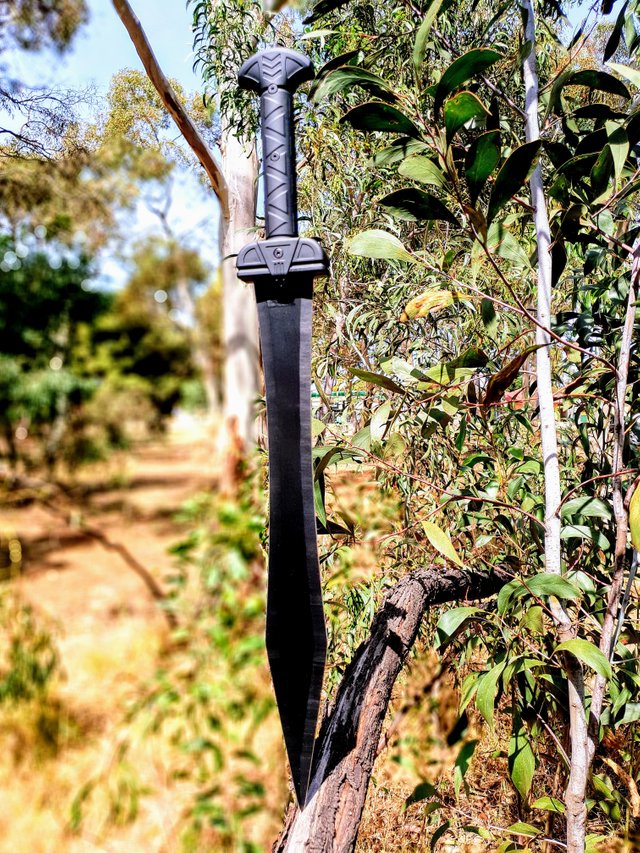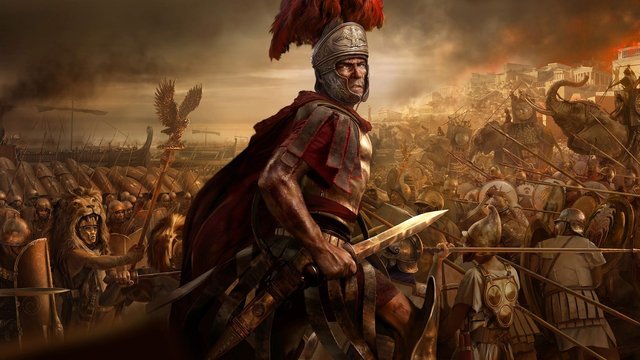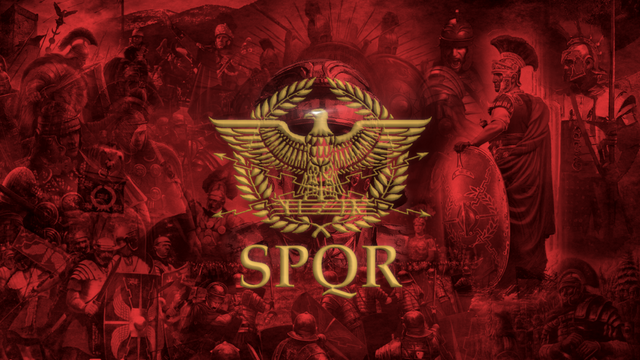Showcase-Sunday: The legions of SPQR
A little while ago I was standing beneath the wall and south (Rome) gate in Florence, Italy. In my mind I imagined thousands of Roman Legions marching in and out of Florence going about their duties on behalf of the Empire - But all I could see in reality were cars and modern-day people; Nowhere near as interesting. I could almost picture the soldiers standing upon the high wall guarding the city though, keeping watch.
I’ve recently gained an avid interest in the Roman legionnaire and the make-up of the Roman armies in general. I've found some great documentaries and a few books that I've delved into also. It’s been fascinating researching it and getting to understand them more. The Roman Empire has had a huge impact upon the world as we know it and even now historians and archaeologists are still unearthing and discovering their secrets. They were an ingenious people, brutal at times, highly organised and adaptable and to this day modern society can than them for things we use on a daily basis. Under-floor heating, concrete and the calendar ours is based on come to mind. Image shows
a Gladius - [Roman sword] that I own.

Who were the legionnaire's
The Roman legionnaire was typically a man of between 17 and around 45 years of age; Men in their 20’s were preferred though. Each man had to establish origo (origin) from a city or town, to prove their identity-status as such, although the majority of the legionnaires were of a rural background with forged origo. Interestingly this forged-origo was usually forged by the recruiters themselves - Talk about an ingenious way to populate the armed forces. Those from a rural background were considered harder, more dependable men with greater endurance due to the rural lifestyle hence the recruiters habit of forging origo to enlist them.
Probation period
Once recruited, each man would undergo probatio (probation). In this process those considered unworthy would be discovered and eliminated by the recruiters. Character, mental and medical suitability was determined and only the best went through. From here it was on to the training. This is interesting and possibly one of the reasons the Legions were so effective as a fighting, and occupying force. This is (public-service) in stark contrast to these days where people are brought into businesses, government and companies simply due to politically-correct-policies of balancing ethnicity and gender.

Training
The training regime was very rigorous, almost brutal, in nature and it demanded a high degree of physical fitness, strength, persistence and fortitude. The training phase went for four months.
Each recruit was tasked with marching 18 miles (29km) within 5 hours with a regular step followed by 22 miles (35km) in 5 hours with a quicker pace. This was done whilst carrying an equipment pack weighing 45llbs (20.5kg). The march was designed to increase the endurance level of the recruits and the slower recruits were beaten mercilessly by the Centurions and officers. It may sound brutal to our soft modern-sensibilities however if you investigate training methods of the more elite services around the world today you’ll find similar tasks as part of their training. (SEALS, Rangers, SAS, Royal marines, Gurkhas, French Foreign Legion etc.) The beatings may not be quite the same but the brutal training evolutions are.
src
Preparing for battle
Once proficient in the marching, endurance and physical training phase the military training would commence with drills on battlefield-manoeuvring and tactics including wedge, hollow square and testudo formations. Weapons and signalling training would also occur at this time. Interestingly the training weapons utilised (wicker or wood) were twice the weight of the actual weapons would eventually use to condition the legionary to the fatigue of battle. This technique is still used to this day in certain fields like sports and in the military also.
Until death do us part...Or many years elapsed
The length of service for a legionnaire was sixteen years after which time the legionary would join the vexillum veteranorum (veterans unit) for a further four years. In later times the minimum service was increased to twenty years and it was not uncommon for a legionary to serve thirty to forty years in the military, most especially in times of war.
A discharge bonus was also added of 12,000 sesterces to sweeten the deal, the legionnaire staying in longer, however I’m not sure how sweet it seemed after 40 years of marching, battle and hard living. A similar system is used in military’s around the world today though which keeps skilled personnel in service.
What they got paid
Annually a legionary would be paid 900 sesterces over three payments. Food, equipment and burial were deducted from this amount though - I know right? Life in the legions would never make them rich.
The lack of good pay was balanced by the prospect of booty though, and I don’t mean that of one of those Kardashian idiots. It was common practice for the bodies of the dead to be looted immediately upon battle ceasing and, of course, plundering was the accepted norm in those days. This allowed the soldiers to supplement their pay and also engage in the barbaric acts often associated with war in those days.
Discipline
Being a legionnaire meant a harsh life of discipline and regimen the lack of which was dealt with brutally. Cowardice was not tolerated either unsurprisingly.
A typical disciplinary-type action would be decimatio from the word “decem” or “tenth”. The punishment entailed selecting every tenth man from a Cohort of 480 men to be put to death. The execution was carried out by the selected mans' comrades and was typically by stoning or clubbing known as fustuarium. The men would be selected by lottery and rank was not observed; It could be anyone from the Cohort. This punishment was administered for transgressions like cowardice, insubordination, desertion, espionage and the like. Brutal.
Brothers in arms
The life of a legionnaire was a brutal existence but one in which deep friendships were forged over the course of a military career. Within a centuria made up of 80 soldiers, the men were divided into a tent group, contubernium of 8 men who fought, ate and relaxed together. This practice invoked high morale on and off the battlefield. It would be much like the bond between operators in the SEAL Teams of today for instance - The bond of brotherhood, forged in the crucible of war.
Military structure
The structure of the Roman army was brilliantly organised and was relatively easily managed through its very simple structure. Below is a typical structure (simplified) although the exact numbers could fluctuate depending upon operational requirements and location.
- Conturbenium – 8 men
- Centuria – 80 men (Commanded by a Centurion)
- Cohort – 480 men
- Legion – 6000 men (The 1st Cohort was of double strength)
- Cavalrymen – 120 (operated as scouts)
There existed some 50 Legions prior to Augustus becoming the sole leader in 31 BC at which time he disbanded about half. Some 125,000 to 300,000 men served in the Legions at various points in history. It must be said that there were thousands more serving as archers, tacticians, armorers, engineers, farriers and blacksmiths and of course the ever-reliable slaves. It was a massive organisation that spanned most of the known world.

The Roman Empire spread across some 5 million square kilometres by the year 117AD and was powerful beyond belief. It conquered many adversaries and annexed city after city reaching, even, to what is now the UK where many old Roman ruins sit now. The Romans occupied Britain for 400 years!
All of this happened on the backs of the Legionnaire. The mighty Roman Empire rested on the shoulders of these warriors, relied on their strength of arm, fortitude, discipline and strength of character on the battlefield. The strength of the Legions was its cohesiveness, tactical superiority and discipline, organisation and brutal efficiency under pressure. These qualities are valued in fighting forces around the globe to this day and training regimes mimic those of the Romans, Spartans, Persians and Greeks among others. src
All those years ago who would have thought the diminutive 5 foot 7 inch tall legionnaire would make such an impact on our world and, with such structure and organisation, who would have thought the mighty Roman Empire could crumble as it did.
You can find the original 1186-word post here, written and posted by me on 6 January 2018. This post comprises 1472 words and has been reworked and reposted for the @nonameslefttouse #showcase-sunday concept. See the intro post here. I suggest you read it as he set some guidelines and a simple copy-paste of an old post is probably not legit.
Design and create your ideal life, don't live it by default
To listen to the audio version of this article click on the play image.

Brought to you by @tts. If you find it useful please consider upvoting this reply.
Nice Sword!
Yeah, bought that last year at a knife show here. Kind of feels nice in the hand and when wielding it.
Posted using Partiko Android
This post has been resteemed by @original.content.
Follow me to keep up-to-date with posts tagged #oc and the author on ocdb's follow list.
Powered by witness untersatz!
I think the stuff like this was why I originally started following you XD
Glad you like it.
Posted using Partiko Android